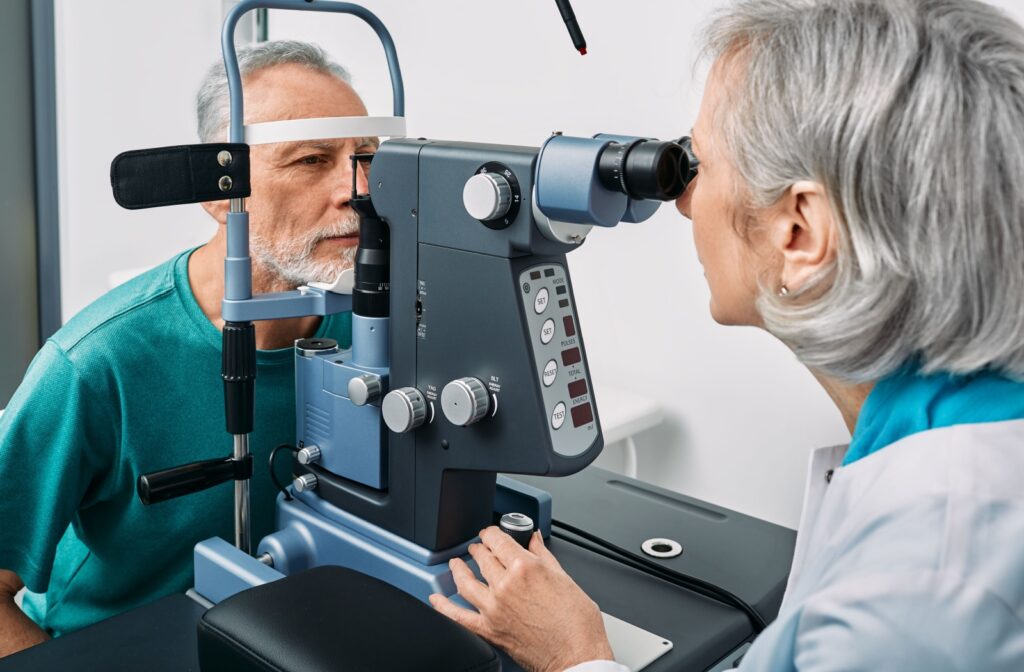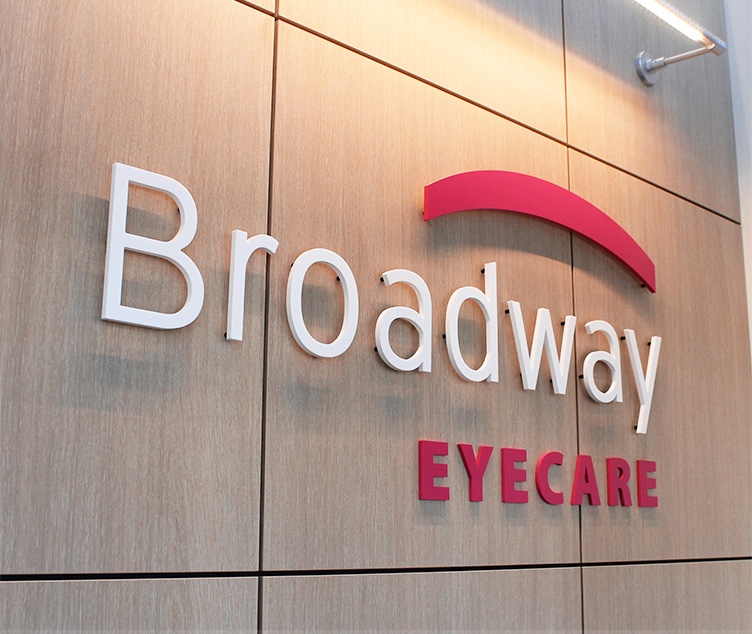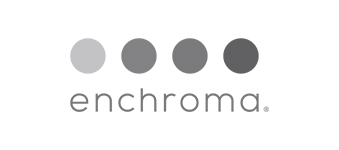Plenty of eye conditions and diseases can affect different parts of the eyes. They’re complex organs and vulnerable to different problems over the years. One common problem is a condition called “age-related macular degeneration,” a condition that affects part of the retina.
Age-related macular degeneration, or AMD, damages the macula. This is the part of the retina responsible for sharp central vision. AMD wears down the tissues and causes blurred vision in the middle of your field of view.
Early warning signs often include blurry vision and difficulty focusing on fine details. Regular eye exams are essential for detecting changes in vision early, allowing for timely intervention and better management of conditions like AMD before they significantly impact your quality of life.
What Is Age-Related Macular Degeneration?
Age-related macular degeneration (AMD) is a progressive eye disease. It affects the retina, the light-sensitive tissue at the back of the eye. Specifically, it affects the central part called the macula, which gives you central vision.
When the macula deteriorates, it impacts tasks requiring fine detail. Reading, driving, and even recognizing a person’s face can become more difficult. AMD typically develops around the age of 50, and it’s a leading cause of vision loss in older adults. While AMD doesn’t cause complete blindness, it significantly interrupts your central vision.
What Are the Types of AMD?
AMD doesn’t always affect people the same way, though it always affects the macula. This condition can be broken down into 2 different categories:
- Dry AMD is the most common type. This progresses gradually as the macula thins with age. This type often begins with minor vision changes and can develop over time. With proper support, dry AMD is manageable with the help of an experienced optometrist.
- Wet AMD is less common and more severe. It occurs when abnormal blood vessels grow beneath the retina, leading to leakage and rapid vision loss. This should be treated as a medical emergency and requires immediate intervention to preserve eyesight.
Both types require constant monitoring and management to preserve your vision and quality of life. While there is no cure for either type of AMD, it is manageable with your optometrist’s help.
What Are the Symptoms?
The symptoms of AMD vary depending on the type and stage of the condition. Early detection is important, as the retina doesn’t heal once damage occurs.
Symptoms of Dry AMD
Blurry vision and difficulty focusing on fine details are often the earliest signs of either type of AMD. Over time, you might notice:
- Difficulty seeing in low light or at night.
- Trouble recognizing faces.
- Dark or empty spots in central vision.
If you notice changes in vision—especially in the middle of your field of view—talk to your optometrist as soon as you can.
Symptoms of Wet AMD
Wet AMD progresses much quicker than the dry form. If you experience any of these symptoms, seek medical attention right away:
- Straight lines may start to appear wavy.
- Dark or empty spots in central vision.
- Blurry spots that grow larger over time.
Wet AMD can rapidly cause severe vision loss. Treat this as an eye emergency—contact your optometrist or a healthcare professional near you. Early treatment is essential for preserving your sight.

How to Treat Age-Related Macular Degeneration
Managing AMD often involves a combination of lifestyle changes, treatments, and professional monitoring. The treatment plan depends on which type you’re experiencing.
For wet AMD, anti-VEGF injections are commonly used to target unwanted blood vessel growth, helping to slow vision loss. These injections help prevent further vision loss but cannot reverse existing damage, which is why early intervention is so important.
Unfortunately, no cure exists for dry AMD. However, certain vitamin supplements, like the AREDS formula, can sometimes delay progression. Taking preventive measures to keep your eyes healthy also helps.
Regular eye exams are a key part of treatment. Your optometrist can monitor any changes in your eyes and give you personalized treatment advice. With their help, you can effectively manage and monitor your AMD to prevent further vision damage.
Can You Prevent Age-Related Macular Degeneration?
It’s not always possible to prevent AMD. However, you can significantly lower your risk of developing—or worsening—your condition. Being proactive is the easiest way to prevent future problems, so try to:
- Wear sunglasses with UV protection when outdoors.
- Eat a diet rich in leafy greens, omega-3 fatty acids, and antioxidants.
- Avoid smoking or exposure to secondhand smoke.
- Manage blood pressure and cholesterol through regular check-ups and lifestyle changes.
- Schedule routine eye exams to catch early signs of AMD or other eye conditions.
These habits go a long way in maintaining healthy eyes, especially if you’re at a higher risk of AMD.
Get Checked for Age-Related Macular Degeneration
If you’re worried about AMD, our team at Broadway Eyecare can help. Taking small steps today helps preserve your vision tomorrow, and we’re here to help keep your vision clear. Take action and book an appointment with our team today!









